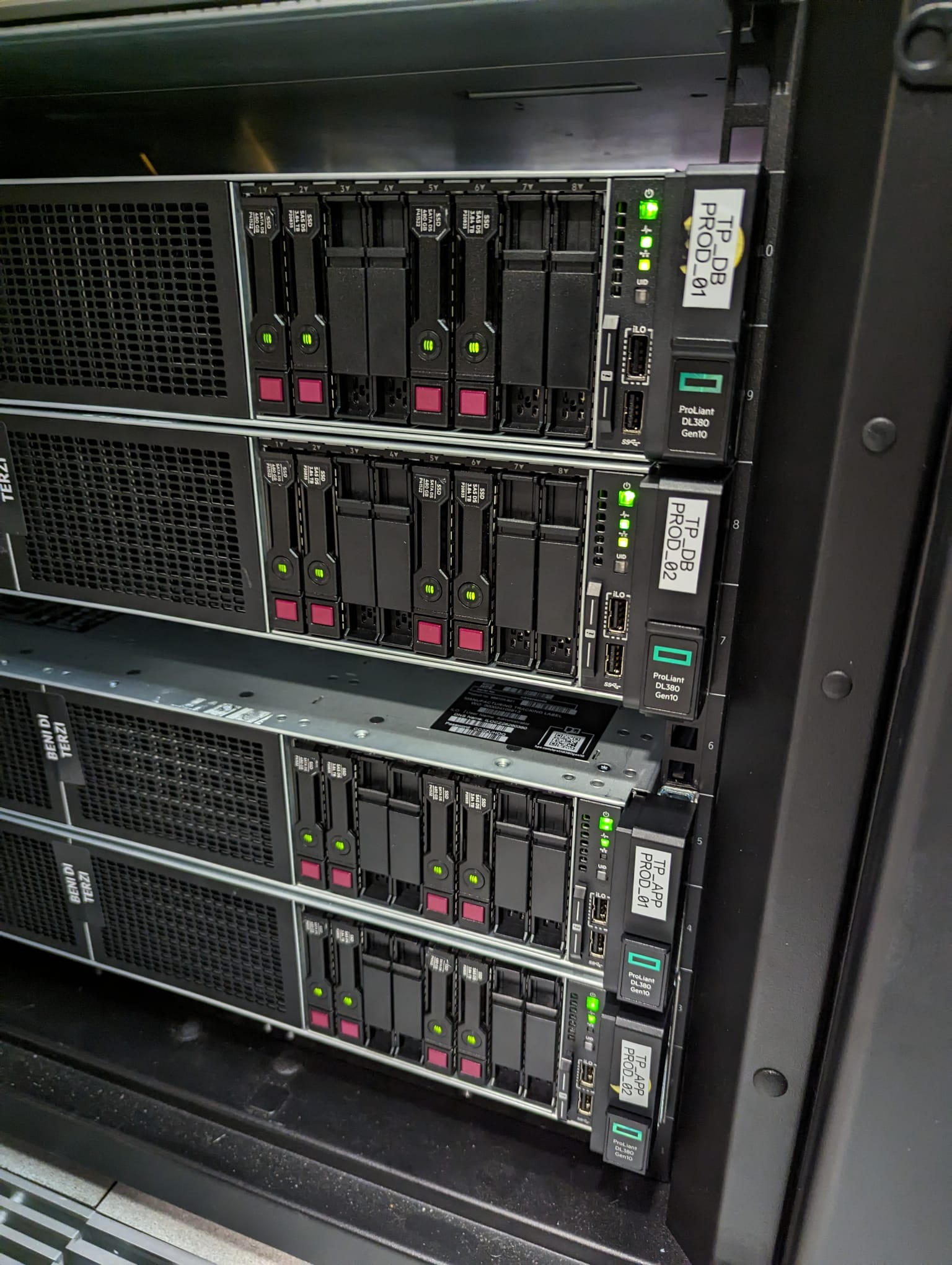On-Premise Server Installation
-
Andrea Rossi
- 12 Jul, 2023
- 03 Mins read

[Versione italiana di seguito]
Disclaimer: Many of our customers have confidentiality agreements safeguarding their brand names from commercial purposes. Hence, you may encounter references such as “Client Name Confidential”, or the customer’s industry instead of the customer’s brand name.
Customers operate within the financial sector across Europe. A private leader with annual revenue, as a group, exceeding hundreds of billions in 2021.
For [Client Name Confidential], the installation and zero configuration of some physical servers is required to host a critical application.
Specifically, these are 4x HP Proliant DL380 and a shared Storage, to be configured in 2 onsite days agreed with the customer.
Two of the servers would host the application, the other two a Postgres database used by the application itself. Andrea Rossi, Giorgio Corini of Sircle Unix&Middleware and I jumped at this opportunity and went to the customer's datacenter. The challenge included several tasks since the Servers had been used for other purposes previously:
- Reconfiguration of the RAID of the internal disks
- Reconfiguration of the console (ILO) for remote emergency access
- Cabling of the server
- Installation of the Operating System requested by the customer (RHEL 7.9)
- Registration of the systems and installation of the packages requested by the supplier and for the Postgres db
- Configuration of the Operating System according to the needs (interfaces, routes, users, filesystem, system parameters)
- Multipath configuration to give visibility to the dbservers of the data LUN for Postgres
Finally, a particular configuration was required to ensure that the Postgres db on the two dbservers could operate in high availability. Redhat HA Cluster was then installed which required several tasks:
- Valid Redhat subscription for the cluster
- Configuration of the Redhat cluster with the related packages
- Configuration of fencing to ensure that a server could exclude (and restart) the other node to avoid data corruption
- Configuration of the resources needed to start / stop the cluster side processes including:
- Logical volume
- Filesystem
- Virtual IP
- Production database and test database (start and stop instance)
It was a major challenge for us at Sircle Unix&Middleware, also due to the tight timeframe for the delivery of the project, but guess what? We love challenges.
Avviso: Molti dei nostri clienti hanno stipulato accordi di riservatezza che tutelano i loro marchi da scopi commerciali. Pertanto potresti incontrare diciture come “Nome Cliente Riservato” oppure vedrai riportato il settore del cliente invece del suo nome.
I clienti operano nel settore finanziario in tutta Europa. Un leader privato con un fatturato annuo, come gruppo, che supera centinaia di miliardi nel 2021.
Per [Nome Cliente Riservato] si è resa necessaria l'installazione e la configurazione da zero di alcuni server fisici per ospitare una delle loro applicazioni critiche
Nello specifico, si tratta di 4x HP Proliant DL380 e uno Storage condiviso, da configurare in 2 giornate onsite concordate con il cliente.
Due dei server avrebbero ospitato l'applicativo, gli altri due un database Postgres utilizzato dall'applicativo stesso.
Io, Andrea Rossi, e Giorgio Corini del Sircle Unix&Middleware abbiamo preso al balzo questa opportunità e ci siamo recati presso il datacenter del cliente.
La sfida comprendeva svariati task essendo che i Server erano utilizzati per altri scopi in precedenza:
- Riconfigurazione del RAID dei dischi interni
- Riconfigurazione della console (ILO) per l'accesso in emergenza da remoto
- Cablaggio dei server
- Installazione del Sistema Operativo richiesto dal cliente (RHEL 7.9)
- Registrazione dei sistemi e installazione di pacchetti richiesti dal fornitore e per il db Postgres
- Configurazione del Sistema Operativo in base alle esigenze (interfacce, rotte, utenti, filesystem, parametri di sistema)
- Configurazione multipath per dare visibilità ai dbserver della LUN dati per Postgres
Infine era richiesta una configurazione particolare per fare in modo che il db Postgres sui due dbserver potesse funzionare in high-availabily. È stato quindi installato Redhat HA Cluster il quale ha richiesto diverse attività:
- Sottoscrizione Redhat valida per il cluster
- Configurazione del cluster Redhat con i relativi pacchetti
- Configurazione del fencing per fare in modo che un server potesse escludere (e riavviare) l'altro nodo per evitare corruzione di dati
- Configurazione delle risorse necessarie per l'accensione / spegnimento dei processi lato cluster tra cui:
- Logical volume
- Filesystem
- Virtual IP
- Database di prod e database di test (start e stop istanza)
È stata una sfida importante per noi del Sircle Unix&Middleware, anche a causa dei tempi ristretti per la consegna del progetto. Ma indovinate un po'? Amiamo le sfide.







